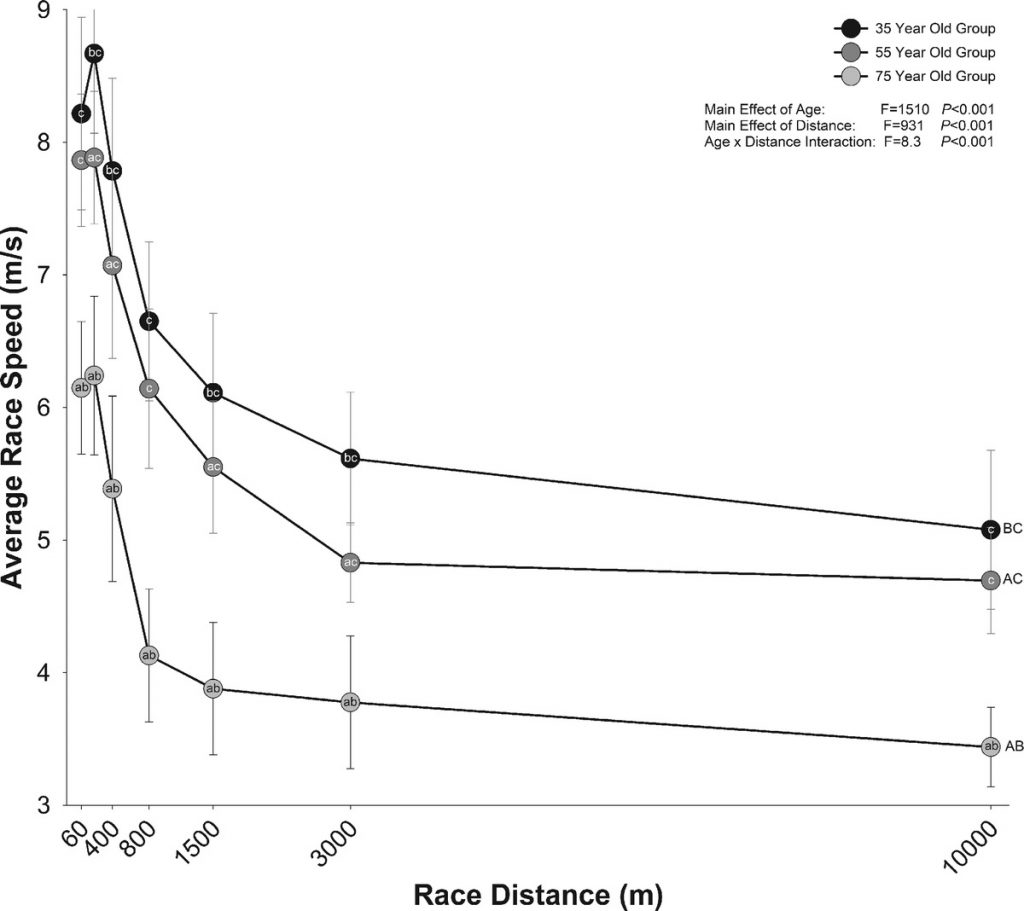People participating in endurance sports tend to be older but what relationship does age have on race performance for these athletes? The peak age for endurance athletes is later than most people think and a new study shows what happens to your race speed after your peak years.
Age of Endurance Athletes
While football players and other speed/power athletes can reach their peak in their late teens and early twenties, endurance athletes are much older. Eliud Kipchoge became the first man to run a marathon in under 2 hours at the age of 34. Jan Frodeno won the Ironman world championship at age 38. And despite the wave of young pro riders in cycling, many older cyclists are still at the top of their game in the world tours.
Recreational athletes are even older with an average age in marathon running, cycling and triathlon around 40. Many athletes much older. It is not uncommon to see people in their 50s, 60s and 70s participating in races and performing quite well. Many athletes even set their personal best times in this age group.
Relationship Between Age and Race Performance
Critical speed, the maximum metabolic rate at which a person can achieve steady-state conditions, can effectively predict race performance. Critical speed will decrease as you age just like heart rate and VO2 max. The question is, does this change the relationship between your critical speed and how fast you actually race?
A study recently published in the journal of Medicine & Science in Sports & Exercise set out to determine the relationship between critical speed and distance and how it changes with aging. The study found that there is a decrease in performance as you age after age 35. The decrease is more significant for athletes over 75 compared to those over 55.

Interestingly, the relationship between speed and distance is curvilinear. With age your critical speed will go down but not the relationship between critical speed and race pace. This means that whether you are 35 or 80 years old, you run races of particular distances at a certain percentage of critical speed. This finding validates 2PEAK´s method of using critical speed and power to determine training zones for cycling and running.
What does this mean in training?
Older athletes should try to minimize the effect of aging on their critical speed. Critical speed is the maximum metabolic rate at which they can achieve steady-state conditions. Additionally, you should train to increase the limited amount of work that can be performed and tolerated above critical speed. 2PEAK plans are designed with this in mind and can help you perform well as you get older.
Everyone accepts that there is some reduction in performance as you get older. But the reduction may be less than you think. You can also read our tips for training the over 50s to see how training evolves as you age. Above all, the most important thing is to keep pushing yourself towards goals you can be excited about and living a healthy lifestyle.
